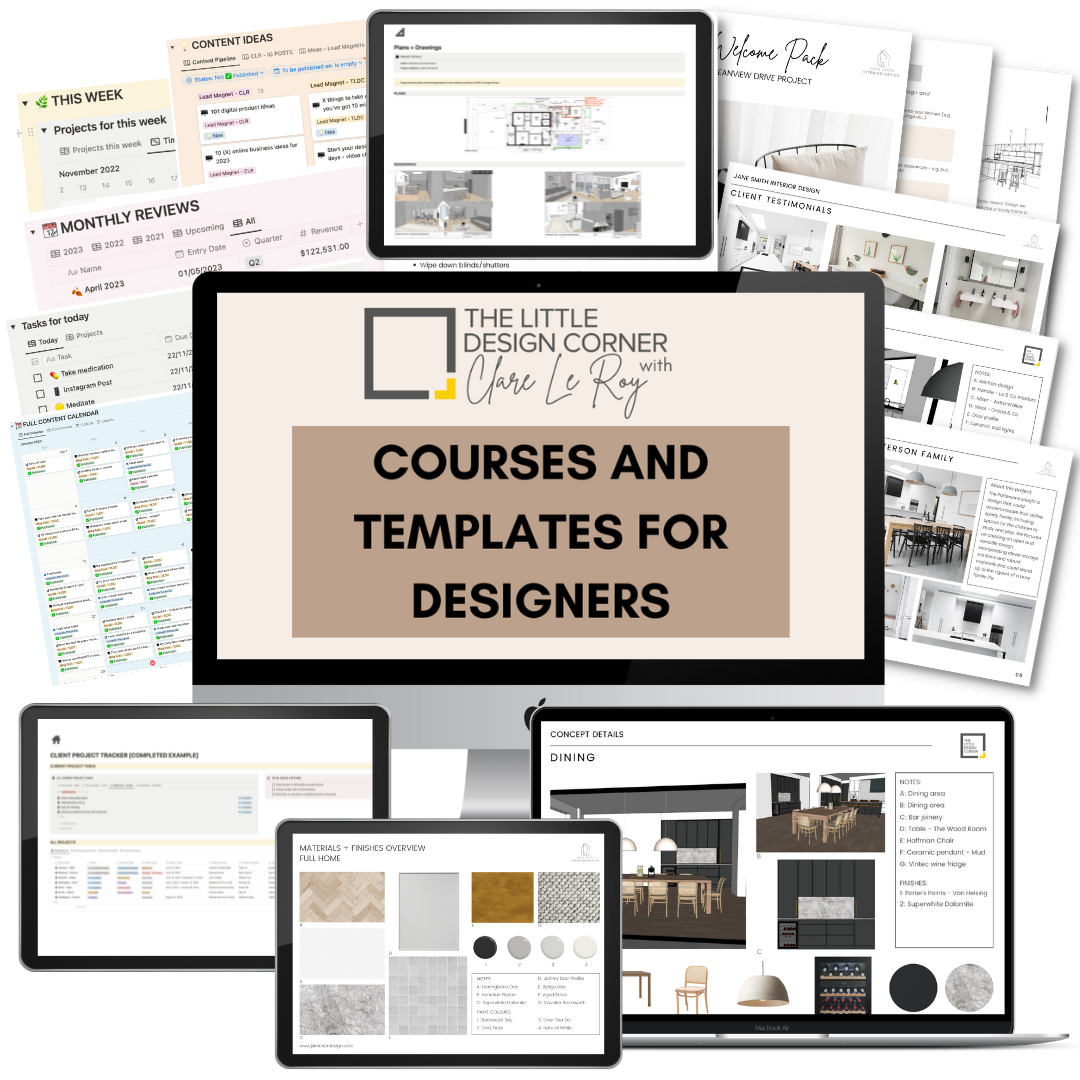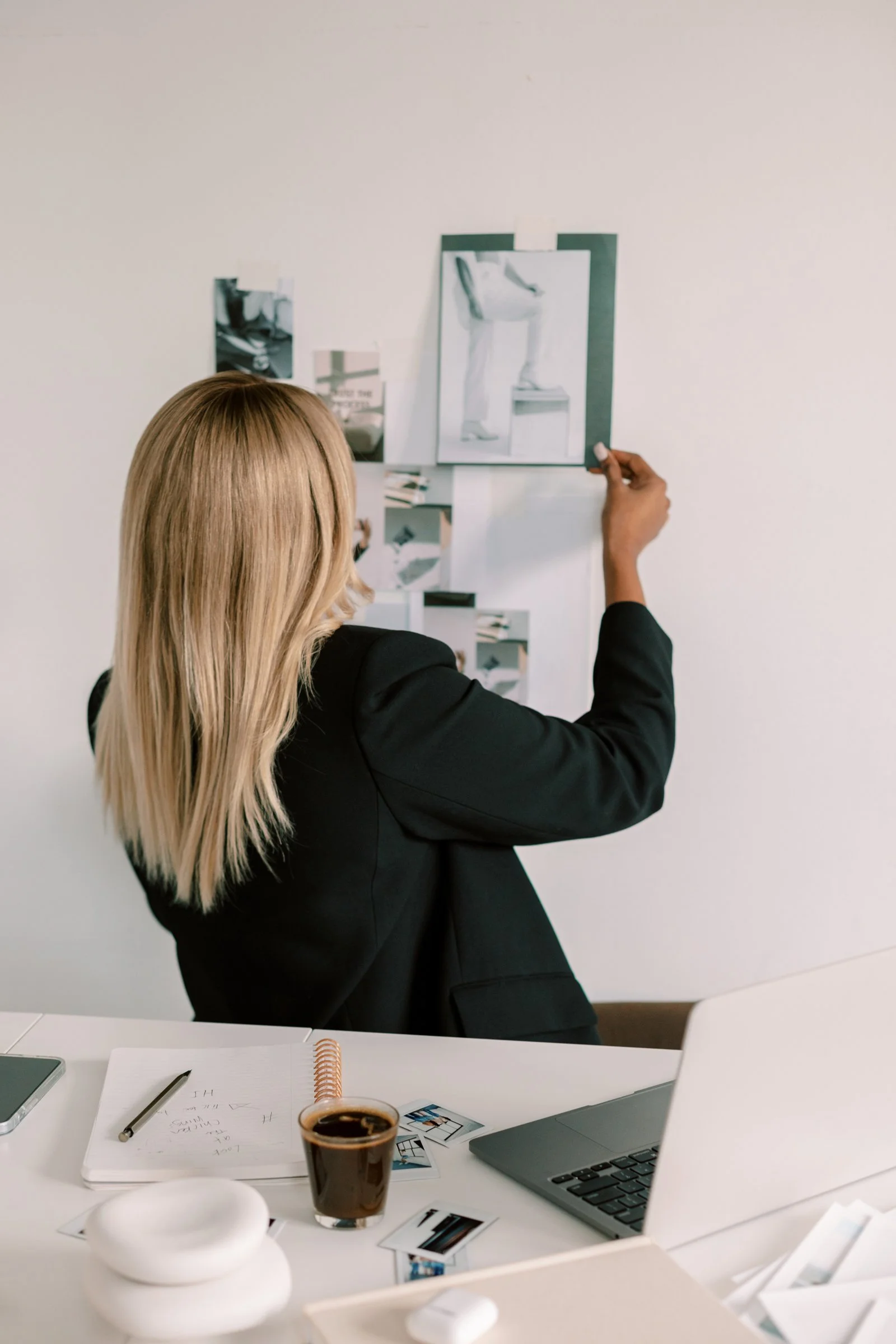Improve your first impression with design clients
Whether we like it or not, first impressions count.
In the world of design, your first impressions with clients can mean the difference between landing a project or being passed over. This is because clients often make subconscious judgments about your ability to handle their project based on appearance and first impressions.
I know lots of you won’t like this - but this is basic human psychology I’m afraid (and we work in an aesthetic industry).
In this post I share why your image and branding, the trust and confidence you exude, your understanding of client aspirations and your aesthetics matter in the world of design.
Image and Branding
As an interior designer, you are your own brand ambassador.
Your personal appearance is an extension of your portfolio and design aesthetic. Being well dressed and put together is important for your brand, no matter what sort of client you are trying to attract.
This doesn't mean you need to be wearing all designer clothes, but you should consider how your appearance will be judged.
People tend to judge by appearances, it’s a basic human psychology whether you like it or not.
Trust and Confidence
A polished appearance can help to create an immediate impression of professionalism and help build trust quickly.
Potential clients will notice small details such as the quality of your bag, the shoes you wear, the watch you have on, the car you drive or even your business cards. They subconsciously make judgments about these details and apply them to the detail you would bring to their interior design project.
Like it or not, these small details can make or break your chances of winning a project.
Client Aspirations
Clients will automatically project their expectations and aspirations onto you.
If a client is investing a significant amount of money in a home or renovation project, they will likely feel more comfortable with a professional who appears successful and detail-oriented.
These qualities are often conveyed through personal appearance, especially in early interactions before someone gets to know you better.
The Aesthetics
Your sense of personal style can serve as a living portfolio for your brand.
You don't need to own lots of expensive clothes to look polished- in fact wearing all black can give off an appearance of sophistication.
When you can afford it, consider investing in a classic handbag to go with your outfit. It's an immediate upgrade and can be considered a business investment. Arriving at a client’s house with a backpack and a drink bottle can be off-putting!!
Whether you like it or not - your potential client starts making judgements about whether you are the right fit for their project from the second they open the door.
Your appearance plays a big role in how potential clients perceive you - especially if you’re targeting a high calibre or affluent client.
Interior design is an aesthetic career and how you present yourself makes a huge difference.
But one of the most important things is to read the room - you have to know the potential clients you are trying to attract and what they think is important.
Some clients may appreciate and expect you to look polished and put together, while others may find it ostentatious. Adjust your appearance based on what you know about your potential clients’ taste and expectations.
It's also just as important to be yourself. Authenticity will resonate with people and trying too hard will be off putting.
So the point of the post is not to judge the way you currently dress - instead it’s to get you thinking about this topic.
Be self aware and ask yourself whether the way you’re presenting yourself is attracting your ideal client or putting them off?
Thanks for reading and catch you in my next post :)
Clare x
Dr Clare Le Roy
Courses and Templates for Designers and Architects
DO YOU WANT TO….
Improve your professionalism?
Find more clients?
Bring in more revenue?
Create better systems and processes?
Then check out my business courses and templates for designers and architects.
These courses and templates leave you with work done - not just a long list of things you need to do next. We have a really strong focus on taking action and getting things created that improve your business.








